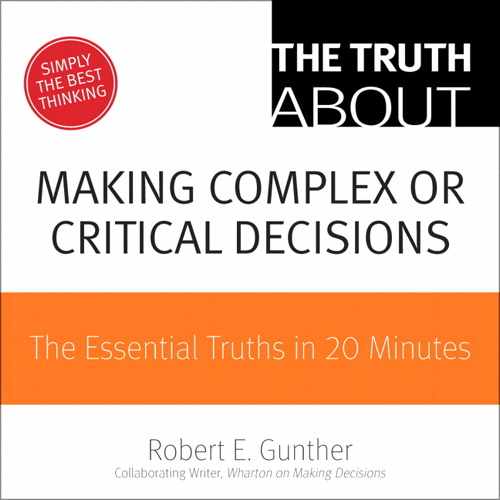TRUTH 2 Keep it real
Get real. If you want to consider a decision seriously, you need to move it from an abstract idea to a concrete reality. When motorists were asked about buying cleaner gasoline in the abstract, they were all for it, but when it came down to paying extra at the pump, that was another matter. Unless you are facing an immediate decision, most decisions are considered in the abstract. What will you do tomorrow or next year? Making decisions more concrete will change the way you approach them.
This can be seen in decisions about giving to charitable causes. People are much more likely to give to an identifiable victim than in response to compelling statistics. A study by researchers Deborah Small, George Lowenstein, and Paul Slovic found that when test subjects were given $5 and asked to make decisions about giving to a charitable victim, they were more likely to give if presented with the concrete image of a seven-year-old girl in Malawi than if presented a set of statistics about food shortages. This also explains why people gave $700,000 to young Jessica McClure after she fell down a well in Texas in 1987 or contributed almost $50,000 to save a single dog, Forgea, stranded on a ship in the Pacific Ocean. In fact, the researchers found that appealing to analysis by providing statistics actually decreased giving to an identifiable victim.
This concreteness is also key to the success of conjoint analysis, a marketing tool developed by Paul Green of the Wharton School that has been used to design new products from hotel chains to automobiles. Instead of asking consumers if they want certain features in the abstract—say a swimming pool or Internet connection at the hotel—conjoint forces subjects to make trade-offs between concrete options. They are given a choice between one hotel room with certain features at a certain price and another with a different set of features and pricing. The choices are then used to infer their preferences.
Because it is concrete, conjoint analysis can be more effective in understanding consumers than asking them straight out. For example, when a group of Stanford MBA students was asked what was most important to them in a job, they ranked salary far down on their list. Factors such as people and location were considered more important. Do you think it’s surprising that MBA students, most with huge student loans to pay off, would not be more interested in salary? In fact, they are. But they don’t want to appear to be. When the same students were surveyed using conjoint analysis, salary emerged as far and away the most important factor. The respondents didn’t mean to lie, but they did. It was easy to rank order the goals in the abstract. It was much harder when dealing with concrete options.
You probably aren’t going to commission a conjoint study every time you make a decision, but you can make sure you consider concrete options. First of all, when presenting yourself with a decision, try to put a face on the statistics. Tell a story and examine the impact of the decision on specific individuals. And put a specific price tag on the decision. What will it cost you? Are you willing to pay? Lots of decisions sound good in the abstract but turn out to be disastrous. Make your decisions concrete before they actually become concrete. By “keeping it real,” you will be more serious about the decision. You will be less likely to lie to yourself. You will think more carefully about the outcome and make better decisions.
